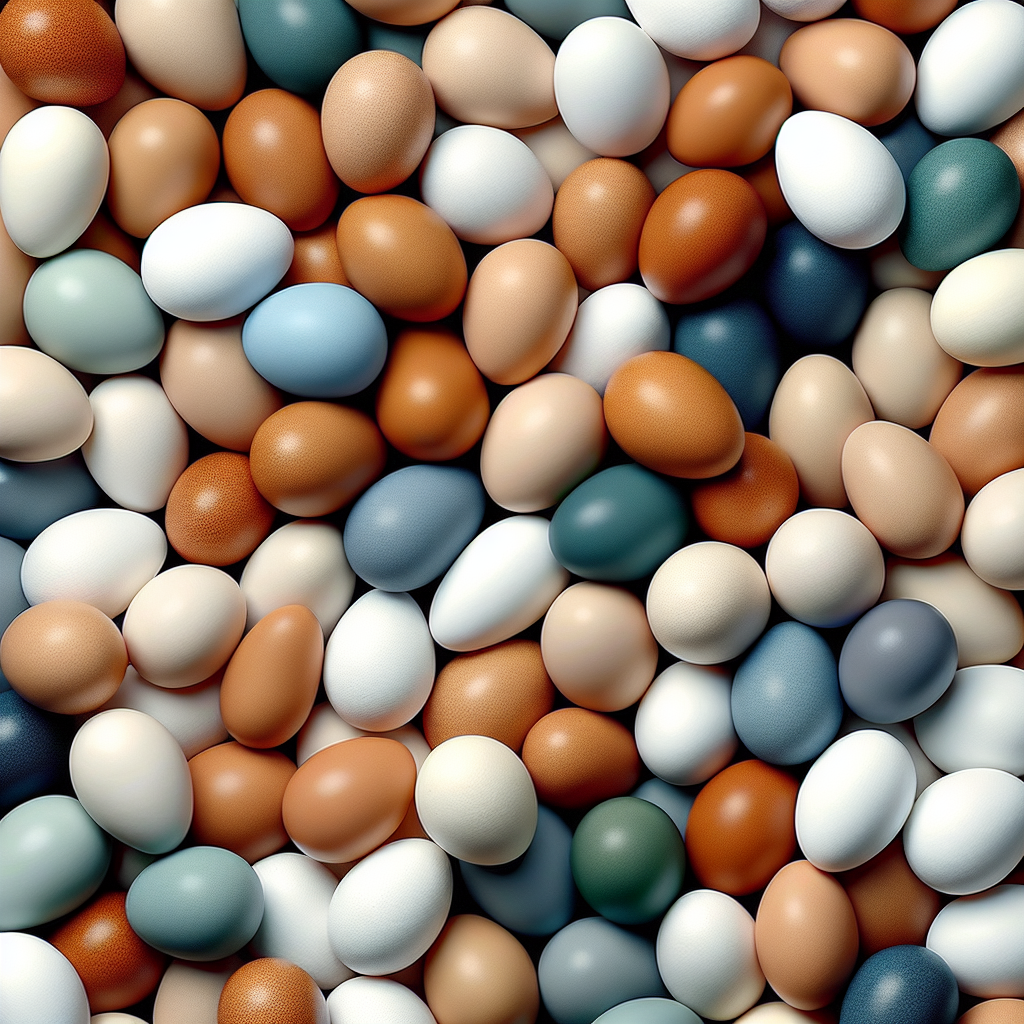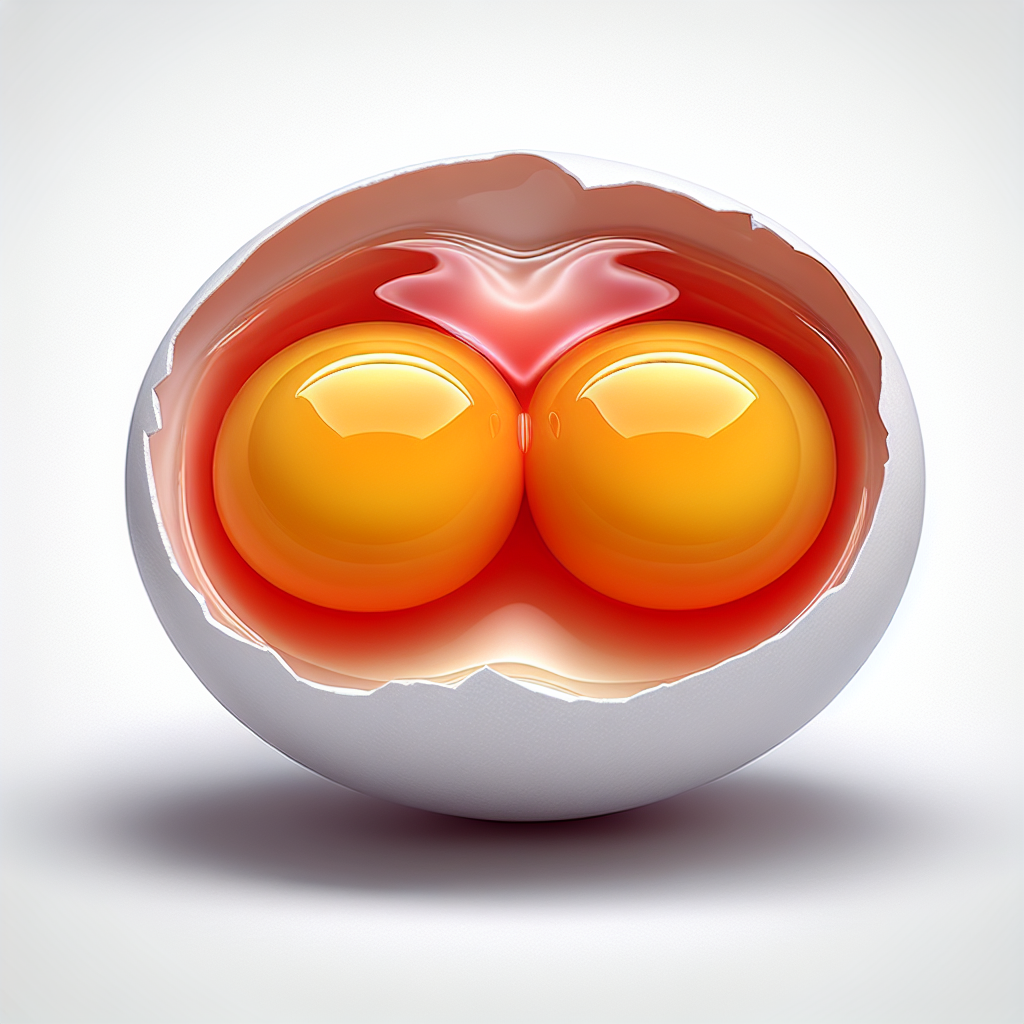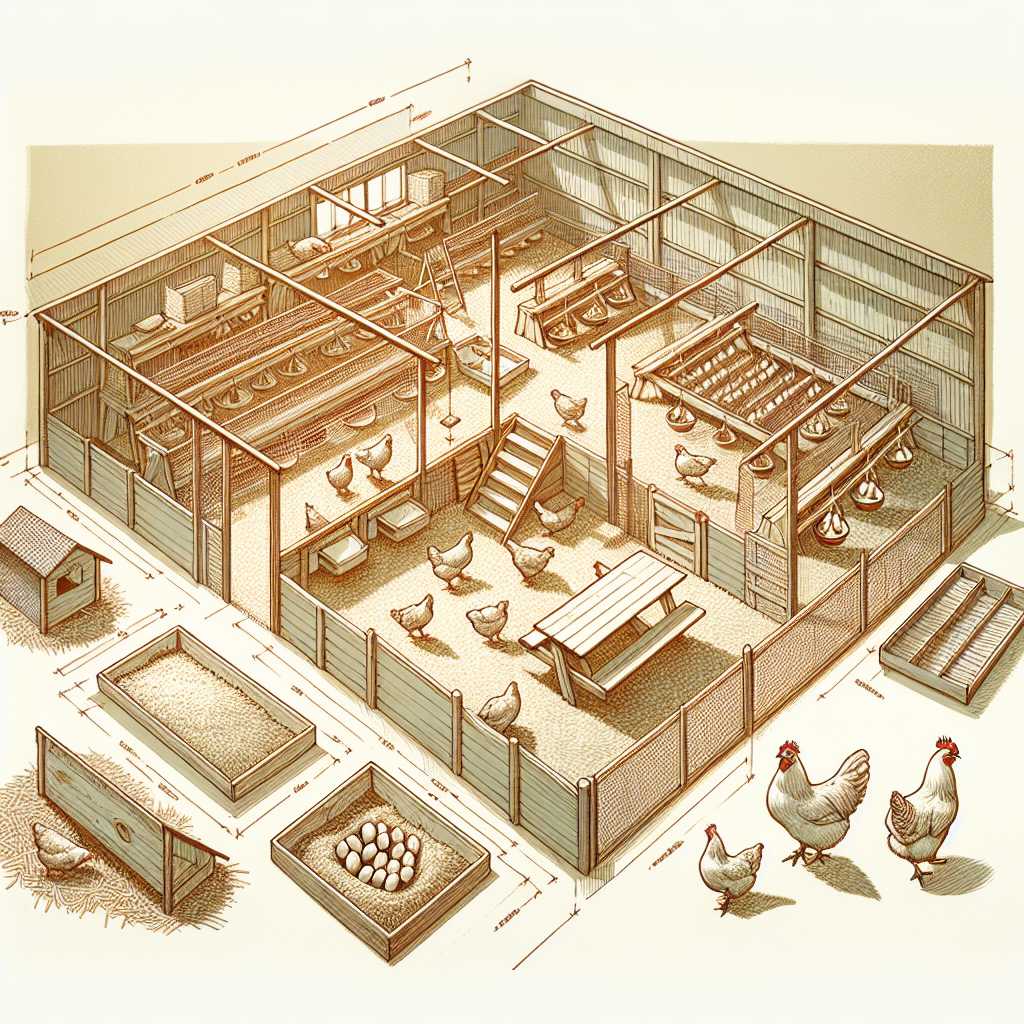If you’re a backyard chicken enthusiast and looking to start your own flock, you may be wondering if certain chicken breeds have a reputation for laying more eggs than others. Well, good news for you! This article explores the topic of specific breeds with superior egg-laying capabilities, providing insights into the breeds that are known for their productivity in the coop. Whether you’re a seasoned chicken keeper or a beginner, knowing which breeds are the best layers can help you make informed decisions when selecting your feathered friends. So, let’s jump right into the fascinating world of egg-laying chicken breeds!
Overview
When it comes to raising chickens, one of the main benefits is the fresh eggs they provide. Whether you are embarking on this adventure as a hobby or for sustenance, understanding the factors that affect egg production and the breed characteristics can greatly enhance your experience as a chicken owner. In this article, we will explore the importance of egg-laying capabilities and the various factors that can influence egg production. We will also delve into some of the top egg-laying breeds, dual-purpose breeds, rare breeds with good egg-laying abilities, and specialty breeds. Additionally, we will discuss the challenges you may face in egg production and provide you with tips on maximizing egg production. So let’s dive in and discover the wonderful world of egg-laying chickens!
Importance of Egg-laying Capabilities
The egg-laying capabilities of chickens are of utmost importance for those who are seeking a constant supply of fresh eggs. Whether you have a small backyard flock or a large-scale poultry operation, the ability of your chickens to produce eggs consistently is crucial. Not only do eggs provide a valuable source of protein and nutrients, but they can also be a source of income if you choose to sell them. Therefore, selecting breeds with high egg-laying capabilities is essential for meeting your personal or commercial needs.
Factors Affecting Egg Production
While some chicken breeds are known for their superior egg-laying abilities, it is important to note that various factors can influence egg production. These factors include the breed itself, the age of the chicken, the diet and nutrition provided, the living conditions, and the presence of stressors or diseases. Understanding and addressing these factors can help improve and maintain a steady egg production rate in your flock.
Breed Characteristics
When choosing a breed for egg production, certain characteristics should be considered. These include egg color, egg size, and egg production rate. Different breeds have different traits, so it’s important to understand what you are looking for and how these characteristics can meet your specific needs.
Egg Color
Chickens can lay eggs in a variety of colors, ranging from white to brown to shades of blue or green. The color of the eggs can be influenced by genetics, with some breeds laying eggs of a specific color. For example, the Ameraucana breed is known for its blue eggs, while the Welsummer breed lays eggs with dark brown speckles. Depending on personal preference or market demand, choosing a breed that lays eggs of the desired color can add a touch of uniqueness to your egg collection.
Egg Size
Egg size can also vary among chicken breeds. Some breeds, such as the Jersey Giant, are known for laying extra-large eggs, while others may produce medium or small-sized eggs. If you have specific preferences regarding the size of the eggs you intend to collect, it is essential to select a breed that can fulfill your requirements.
Egg Production Rate
The egg production rate of a chicken breed refers to how many eggs it can lay within a specific timeframe. This rate can vary greatly depending on the breed and other factors such as age and environmental conditions. Some breeds are known for their exceptional egg-laying capabilities, often producing more eggs per week compared to others. When selecting a breed, it is crucial to consider the egg production rate if you desire a steady and consistent supply of eggs.
Top Egg-laying Breeds
When it comes to optimal egg production, there are several breeds that consistently rank as top performers. These breeds have a long history of being popular choices for egg production due to their high egg production rates and other favorable characteristics. Let’s take a closer look at three of the most renowned top egg-laying breeds:
White Leghorn
The White Leghorn breed is widely recognized as one of the best egg-laying breeds. These chickens are known for their exceptional egg production rates, often laying more than 280 large white eggs per year. They are relatively small in size, making them efficient layers that require less feed compared to larger breeds. With their efficient egg production and sleek appearance, the White Leghorn is a popular choice for those primarily focused on egg production.
Rhode Island Red
The Rhode Island Red breed is a well-established breed that is highly regarded for its egg-laying capabilities. These chickens are known for their ability to consistently produce large, brown eggs. With a production rate of around 200-300 eggs per year, the Rhode Island Red is a reliable and versatile breed for those seeking consistent egg production. Additionally, they are known for their hardiness, making them well-suited for various climates and environments.
Golden Comet
The Golden Comet breed is a hybrid breed that combines the best traits of the White Leghorn and the Rhode Island Red. These chickens are prolific layers, consistently producing large brown eggs. With a production rate comparable to the Rhode Island Red, the Golden Comet is a popular choice for those who desire high egg production combined with docile and friendly personalities. This breed’s adaptability and excellent egg-laying capabilities make them a top contender for maximizing egg production.
Dual-purpose Breeds
If you are looking for chickens that serve a dual purpose of both egg production and meat, there are breeds specifically known for their capabilities in both areas. These dual-purpose breeds offer the advantage of providing a steady supply of eggs while also having the potential for meat production when necessary.
Plymouth Rock
The Plymouth Rock, also known as the Barred Rock, is a well-known dual-purpose breed. While they may not lay as many eggs as the top egg-laying breeds, they still produce a respectable number of eggs per year. Their medium to large-sized brown eggs, coupled with their sturdy build and meat quality, make them a practical choice for small-scale meat production while maintaining a decent egg supply.
Sussex
The Sussex breed is another popular dual-purpose breed that excels in both egg production and meat quality. These chickens have a calm and friendly demeanor, making them a delight to have in any flock. Sussex chickens are known for their medium to large-sized creamy-white or light brown eggs. With their excellent feed conversion rate and ability to withstand various climates, the Sussex breed is a well-rounded choice for those seeking dual-purpose chickens.
Wyandotte
The Wyandotte breed, with its distinctive appearance and dual-purpose capabilities, is a breed worth considering. These chickens are known for their ability to lay medium to large-sized brown eggs while also having excellent meat quality. With their beautiful plumage, the Wyandotte adds an aesthetic appeal to any flock. They are hardy birds that thrive in various climates, making them a favorable choice for those looking to balance egg production and meat potential.
Rare Breeds with Good Egg-laying Abilities
If you are looking to add a touch of uniqueness to your flock while still maintaining good egg-laying capabilities, rare breeds can be an excellent choice. These breeds are not as common as the top egg-laying breeds but possess distinctive qualities that make them desirable for both their appearance and egg production.
Australorp
The Australorp breed, originating from Australia, is known for its exceptional egg-laying abilities. These chickens have held world records for the most eggs produced in a year, with some individuals laying over 300 eggs. With their glossy black feathers and docile nature, Australorps make a beautiful addition to any flock, all while providing a steady supply of eggs.
Marans
Marans chickens are specifically sought after for their dark brown eggs, which are highly prized for their rich color and flavor. These chickens originated from France and have become popular for their unique egg-laying abilities. Marans are known for laying eggs with varying degrees of chocolate brown coloration and can be a striking addition to any egg collection.
Faverolles
Faverolles chickens, originating from France, are a breed known for their distinctive appearance and good egg-laying abilities. They are known for producing medium to large-sized light brown eggs. With their fluffy plumage and friendly nature, Faverolles make charming and productive additions to any flock.
Specialty Breeds
If you are looking to add some uniqueness and variety to your flock, there are specialty breeds that offer a delightful twist. These breeds may not have the highest egg production rates compared to the top egg-laying breeds, but they make up for it with their unique characteristics and charm.
Silkie
Silkie chickens are not known for their exceptional egg-laying capabilities, but they are adored for their fluffy feathers and unique appearance. These chickens have black skin and bones, and their feathers are soft, resembling fur rather than traditional feathers. While their egg production may not be as high as some other breeds, Silkies are known to be excellent brooders and caregivers, making them a wonderful addition for those interested in hatching and raising chicks.
Polish
Polish chickens, also known for their distinctive appearance, have a prominent crest of feathers on their heads. Their unique Polish crest gives them a quirky and eye-catching look. While their egg production may not be as high as other breeds, Polish chickens are known to lay medium-sized white eggs. With their charming and amusing presence, Polish chickens add character and diversity to any flock.
Araucana
Araucana chickens are known for their blue eggs, which can range from pale blue to a vibrant turquoise color. These unique eggs have become highly sought after in the culinary world for their aesthetic appeal and novelty. The Araucana breed can come in various colors and feather patterns, and their eggs add a touch of excitement to any egg collection.
Challenges in Egg Production
While chickens can provide a steady supply of eggs, various challenges can arise during the egg production process. It is important to be aware of these challenges and take appropriate measures to overcome them to ensure a successful and consistent egg production.
Molting
Molting is a natural process in which chickens shed old feathers and grow new ones. During this period, chickens redirect their energy towards feather growth, resulting in decreased egg production or even a temporary halt in laying eggs. Molting typically occurs once a year, and the duration can vary depending on the individual chicken. By understanding and providing the necessary care and nutrition during the molting process, you can help your chickens bounce back and resume egg-laying.
Predators
Predators can pose a significant threat to the safety and well-being of your chickens, which in turn can impact egg production. Predators such as raccoons, foxes, and rats can attack the flock and disrupt their routine, leading to stress and decreased egg production. Implementing predator-proof measures, such as secure fencing, locked coops, and regular monitoring, can help protect your chickens and maintain a conducive environment for egg production.
Disease
Disease outbreaks can have a devastating impact on egg production. Poultry diseases such as avian influenza, Newcastle disease, or salmonella can lead to sickness or death in chickens, resulting in decreased egg production or total loss of production. Implementing biosecurity measures, routine vaccinations, and regular health checks can help prevent the spread of diseases and maintain a healthy flock with consistent egg production.
Tips for Maximizing Egg Production
To maximize egg production and ensure a consistent supply of fresh eggs, there are several tips you can follow. By providing a proper diet, maintaining suitable living conditions, and regulating light exposure, you can help your chickens reach their full egg-laying potential.
Provide a Proper Diet
A balanced and nutritious diet plays a crucial role in egg production. Ensure that your chickens have access to a high-quality layer feed that contains all the necessary vitamins, minerals, and nutrients. Supplement their diet with fresh fruits and vegetables, which can provide additional nutrients and variety. Additionally, providing a sufficient supply of calcium, such as crushed oyster shells, can support the development of strong eggshells.
Maintain a Suitable Environment
Chickens thrive in a clean and comfortable environment. Ensure that the coop is kept clean and dry, regularly removing bedding and droppings. Provide adequate ventilation to prevent heat stress or respiratory issues. Additionally, ensure that the chickens have sufficient space to move and perch comfortably.
Regulate Light Exposure
Chickens’ egg production is influenced by the duration and intensity of light exposure. To ensure consistent egg production, provide around 14-16 hours of light per day. If natural daylight is insufficient, consider using artificial lighting to supplement the hours of daylight. Additionally, maintaining a regular lighting schedule can help establish a routine for your chickens.
Conclusion
Whether you are a novice chicken owner or an experienced poultry enthusiast, understanding the importance of egg-laying capabilities and the factors that influence egg production is crucial. By selecting breeds known for their superior egg-laying abilities, such as the White Leghorn or Rhode Island Red, you can ensure a steady supply of fresh eggs. Additionally, considering dual-purpose breeds, rare breeds, or specialty breeds can add diversity and uniqueness to your flock. However, it is important to be aware of the challenges that can arise during egg production and implement appropriate measures to overcome them. By providing a proper diet, maintaining a suitable environment, and regulating light exposure, you can maximize egg production and enjoy a consistent supply of fresh, nutritious eggs from your beloved flock. So why wait? Take the plunge into the world of egg-laying chickens and reap the rewards of their incredible capabilities!




